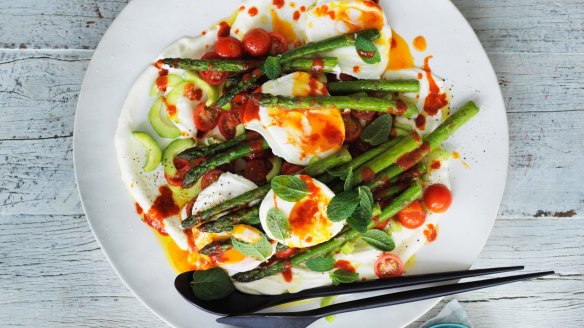Why we're eating more eggs (and less meat) than ever

A slumping property market and stagnant pay packets are good news for at least one staple food in Australia - eggs.
Consumption jumped more than 6 per cent to 6 billion in the year ending June 2018, or 245 eggs a year for every woman, man and child, according to industry group Australian Eggs. While that's still short of one a day, the growth compares with declines in beef and chicken consumption.

A main reason for the increase is simply affordability, according to Rowan McMonnies, the managing director of Australian Eggs. Prices of other farm products such as flour and vegetables have risen as a drought cut supply in the most-populous eastern states.
"It is a great way to put food on the table," he said in an interview. A dozen caged eggs cost about $3.
High household debt, weak wage growth and tumbling property prices are placing pressure on Australians. The central bank on Tuesday kept interest rates unchanged amid signs consumers are hunkering down.
The growth in egg consumption isn't limited to Australia. Americans produced enough eggs in January alone to get to the moon and halfway back if you stacked them together and are projected to eat 279 each in 2019, according to the U.S. Department of Agriculture. That would be the highest since 1973.
Egg consumption has also been boosted by a reassessment of their cholesterol levels by health professionals. Around two decades ago when the cholesterol level in eggs was considered a problem, annual Australian consumption was around 191 eggs a person. New diets are trending toward whole foods and nutrient-dense eggs fit the bill, McMonnies said.
In comparison to eggs, consumption of chicken, the most-eaten meat in Australia, declined 3.3 per cent to an estimated 47.2 kilograms per person in 2017/18 and is forecast to drop again in 2018-19 to 45.5 kilograms per person, according to the government forecaster. Beef and veal consumption dropped 6.3 per cent to 23.8 kilograms a person in 2017-18 and is forecast to drop every year through to at least 2023-24.
Bloomberg
The best recipes from Australia's leading chefs straight to your inbox.
Sign up- More:
- Health and nutrition